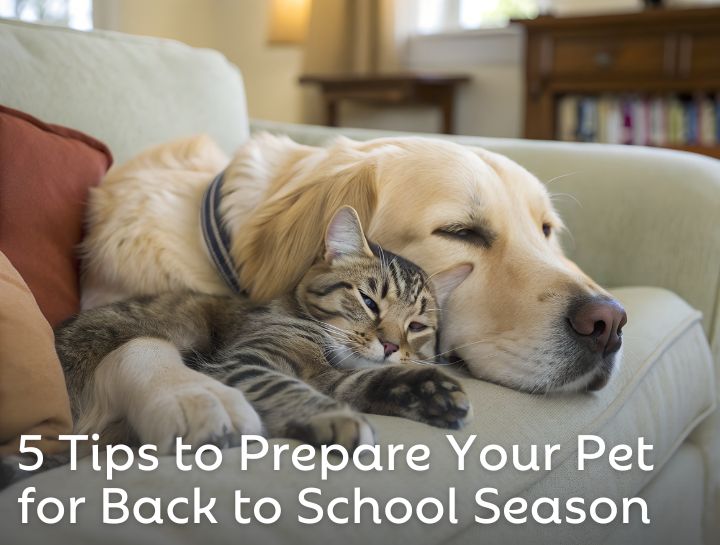Helping Your Pets Ace the Back-to-School Transition

As backpacks are packed, lunch boxes are prepped, and morning alarms begin to ring again, your pets might feel a bit left out of the new rhythm. Dogs and cats thrive on routine, and sudden changes can lead to boredom, stress, or even separation anxiety. But don't fret – with a little preparation and plenty of love, your dog can comfortably adjust to the quiet hours.
1. Maintain a Consistent Routine
Pets are creatures of habit. A few weeks before school starts, begin gradually shifting their feeding times and play schedules to align with the new school-year routine. This subtle change helps prevent a sudden shock to their system.
-
Morning Exercise and Play Matters: Start the day with dedicated physical activity. For dogs, a brisk walk or energetic playtime can help them burn off energy, making them more likely to rest calmly while you're away. For cats, a morning play session using interactive toys like wand toys or laser pointers can satisfy their predatory instincts and encourage them to nap later. A well-exercised pet is often a content pet!
2. Create a Calm Zone
Designate a quiet, comfortable space where your pet can retreat and feel secure. This could be a cozy bed, a crate, a cat tree with a high perch, or a special nook with their favorite blanket or a worn t-shirt that smells like you.
-
Tailored Comfort: Dogs often appreciate a bed in a low-traffic area, while cats may prefer vertical spaces and hiding spots when they feel stressed or want privacy.
-
Calming Aids: Calming music, white noise, or leaving the television on low can provide comforting background noise for your furry companions. Pheromone spray and diffusers can also be helpful calming agents.
3. Bust Boredom
-
Puzzle Power: Stock up on interactive puzzle toys and treat-dispensing toys. Fill them with your pet's favorite kibble or pet-safe treats. For dogs, options like peanut butter or frozen banana slices work well. For cats, look for toys that encourage natural hunting behaviors, such as those that dispense food when batted around. These can keep your pet mentally stimulated and engaged for extended periods.
-
Short Training Sessions: Incorporate short, fun training sessions into your daily routine. This strengthens your bond and provides mental exercise. Yes, cats can be trained too!
4. Manage Separation-Related Stress
-
Vary Your Departures: Pets are perceptive! They pick up on cues like grabbing keys or putting on shoes. Try to vary your routines to avoid triggering anxiety before you even step out the door.
-
Distraction is Key: Offer a special toy or treat just before you leave. This creates a positive association with your departure. Consider a "departure toy" that only comes out when you're about to leave the house.
-
Potty Breaks: For dogs, ensure they have appropriate bathroom breaks throughout the day. For cats, make sure litter boxes are clean and easily accessible. If your family will be gone for long stretches, consider hiring a trusted pet sitter or dog walker for midday visits. Doggy daycare can be a great option for social dogs, while cat sitters can provide fresh food/water, litter box scooping, and some social interaction for your feline friend.
5. Keep the Bond Strong
Remember, consistency and dedicated one-on-one time are crucial. Even with busy schedules, make time for quality cuddles, play, and attention when you are home. Reinforce that your return is always something to look forward to!
If you have any concerns about your pet's adjustment or suspect they might be experiencing significant anxiety, please don't hesitate to reach out to our team at 386-586-3000. We're here to help your best friend navigate this transition with comfort and confidence!
